|
Printables |
PowerPoints |
Online exercises |
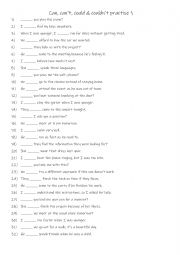
|
A1 Can, can�t, could & couldn�t practise 1
Practising "can," "can�t," "could," and "couldn�t" at the A1 level is essential for basic communication, as it enables you to express ability, permission, and possibility. These modal verbs allow you to talk about what is possible now or was possible in the past, which is vital for forming complete sentences and polite requests. Mastering them ...
Level: elementary
Age: 7-100
Type:
Downloads: 106
|
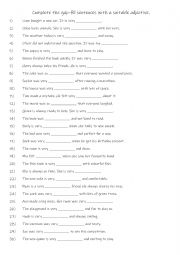
|
A1 Complete the gap-fill sentences with a suitable adjective.
Students read the sentences and complete it with a suitable adjective they know. Possible answers on page 2.
Level: elementary
Age: 10-100
Type:
Downloads: 104
|
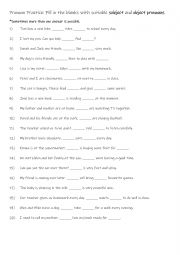
|
A1 Complete the sentences with the correct personal subject & object pronouns
Students read the sentences to see what subject or object pronoun is required to complete the gap-fill. Answers on page 2.
Level: elementary
Age: 8-100
Type:
Downloads: 127
|
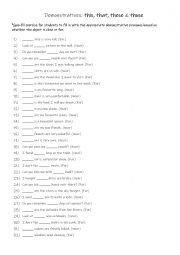
|
A1 Demonstratives this, that, these & those
Gap-fill exercise for students to fill in with the appropriate demonstrative pronouns based on whether the object is close or far. Answers on page 2.
Level: elementary
Age: 8-100
Type:
Downloads: 103
|
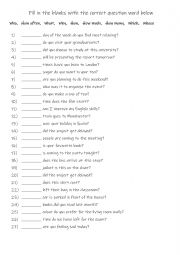
|
A1 Fill in the blanks with the correct question word below
Students familiarise themselves with the question words in bold, then read the sentences to see which interrogative is needed to complete the question. Answers on page 2.
Level: elementary
Age: 8-100
Type:
Downloads: 106
|
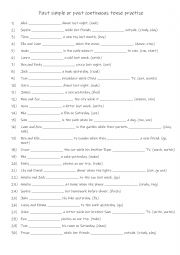
|
A1 Past simple or past continuous tense practise
Students read the sentences, then using key words to decide which tense is required to complete the gap-fill with the correct tense. Answers on page 2
Level: elementary
Age: 8-100
Type:
Downloads: 116
|
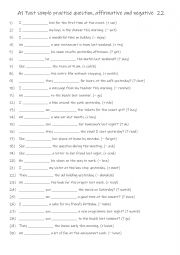
|
A1 Past simple practise question, affirmative and negative 2
Learning the past simple tense with questions, affirmative, and negative sentences is essential for students as it enables effective communication about past events. It provides a foundation for understanding grammar and constructing basic sentences, which is crucial for daily conversations. Mastering these forms ensures students can ask questions,...
Level: elementary
Age: 8-100
Type:
Downloads: 128
|
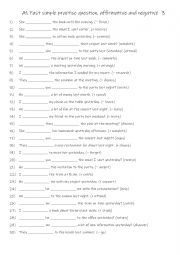
|
A1 Past simple practise question, affirmative and negative 3
Learning the past simple tense with questions, affirmative, and negative sentences is essential for students as it enables effective communication about past events. It provides a foundation for understanding grammar and constructing basic sentences, which is crucial for daily conversations. Mastering these forms ensures students can ask questions,...
Level: elementary
Age: 8-100
Type:
Downloads: 130
|
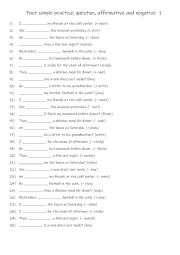
|
A1 Past simple practise with: question, affirmative and negative 1
Learning the past simple tense with questions, affirmative, and negative sentences is essential for students as it enables effective communication about past events. It provides a foundation for understanding grammar and constructing basic sentences, which is crucial for daily conversations. Mastering these forms ensures students can ask questions,...
Level: elementary
Age: 8-100
Type:
Downloads: 102
|
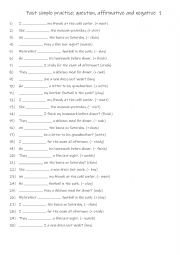
|
A1 Past simple practise with: question, affirmative and negative 1
Learning the past simple tense with questions, affirmative, and negative sentences is essential for students as it enables effective communication about past events. It provides a foundation for understanding grammar and constructing basic sentences, which is crucial for daily conversations. Mastering these forms ensures students can ask questions,...
Level: elementary
Age: 8-100
Type:
Downloads: 129
|
|
|
|
|












